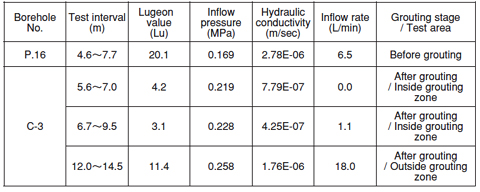Fig.12-22 Conceptual design of MIU, location of the post-excavation grouting experiment in red (GL-140~ - 148 m). Depth of shafts as of March 2007.
Fig.12-23 Geological description and borehole layout for the post-grouting (Red area in Fig.12-22)
Table 12-1 Test results

The Mizunami Underground Research Laboratory (MIU) is currently being constructed to establish techniques for investigation, analysis and assessment of deep geological environments, and to develop a range of engineering expertise for application in deep underground excavations in crystalline rocks such as granite. Construction of shafts and galleries is being executed to confirm the results of the predictions made in the surface-based investigation phase. The construction phase started on July 8th, 2002, five years ago. Recently, shaft excavation has progressed to about GL- (below ground level) 200m where a substage tunnel is under construction (Fig.12-22).
Consideration of environmental impact due to the excavation, optimization of costs for treatment of groundwater as well as reduction of inflow water is indispensable for continuing the excavation of MIU. Post-excavation grouting (hereafter "post-grouting" ) on the shaft walls at GL-142~-146m has been conducted as part of development of techniques for reducing water inflow (Fig.12-23). Post-grouting is a technique of injection of cement materials in the rock mass after excavation. The post-grouting on the shaft walls has seldom been performed previously, and is one of the engineering techniques which must be developed for the continuation of the construction of the shaft. In the post-grouting, hydraulic testing such as injection and recovery method have been carried out in the drilled boreholes from the shaft wall. From the testing, Lugeon value defined as water injection rate with constant injection pressure of 0.98MPa and hydraulic conductivity (flux of water in the rock mass per unit of water head) were obtained. These values were compared, not only before and after the grouting, but inside and outside of the injection area. The results of the test showed that both Lugeon value and hydraulic conductivity after post-grouting were decreased to one fifth of the values before grouting. The water inflow was hardly observed in the injected volume after grouting (Table 12-1). On the other hand, the inflow rate after post-grouting was higher than the one before outside the injected volume. From the tests of the post-grouting, the strategy and methods applied were confirmed to be effective in reducing permeability of the rock.
Although pre-excavation grouting technique will be the basic method for reducing inflow water, the post-grouting technique will be also applied in case of an unacceptable inflow volume. In this way, the construction of MIU proceeds while protecting the environment and optimizing the costs of water treatment by reducing the water inflow.